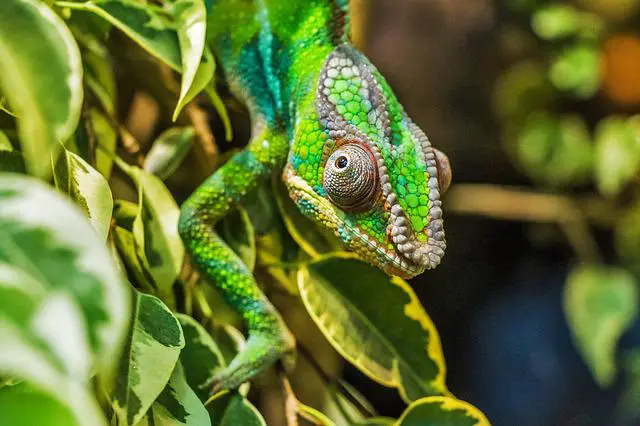If you have a chameleon, you may wonder why it is always hiding. This guide will help explain the reasons behind this behavior and give tips on making your chameleon feel more comfortable.
There are several reasons why your chameleon may be hiding:
Chameleons are shy or scared by nature.
This is an evolutionary adaptation that has helped them to survive in the wild. By being afraid of predators, they are less likely to be eaten. Their shyness also allows them to avoid detection by potential prey.
However, this natural wariness can make chameleons challenging to keep as pets. They are often skittish and may spend much of their time hiding. As a result, potential owners should carefully research chameleons before bringing one home.
Those prepared to provide a calm, stress-free environment may find that these fascinating reptiles can make rewarding pets.
-They feel threatened or intimidated by their surroundings
While they are often considered solitary creatures, chameleons live in groups and prefer to be around other chameleons.
However, they can become territorial and fight with other chameleons if they feel threatened or intimidated by their surroundings.
Chameleons use their color-changing ability to communicate with other chameleons and to camouflage themselves from predators.
They can also change their skin temperature to regulate their body temperature. Chameleons are fascinating creatures with many unique adaptations that allow them to survive in their environment.
-They are trying to avoid predators
Chameleons have many predators, including birds, mammals, and snakes.
Chameleons have evolved several defenses to avoid being eaten; the most obvious of which is their ability to change color. Chameleons can make themselves nearly invisible to potential predators by matching their surroundings.
In addition, chameleons often stay hidden in trees and bushes, using their camouflage to remain undetected. Chameleons usually try to escape if they are discovered by running or climbing away.
They will defend themselves with their sharp claws and teeth if all else fails. By understanding their dangers, chameleons have developed various strategies for avoiding predators.
-They are sick or injured and want to rest in a safe place
Chameleons are often seen as mysterious creatures, but there is one thing that they are very clear about: when they are sick or injured, they want to find a safe place to rest.
In the wild, this might mean finding a protected spot in the trees, but in captivity, it is essential to provide a chameleon with a shelter that meets its needs.
A sick or injured chameleon is usually less active than usual and may spend more time hiding. It is essential to provide a big enough shelter for the chameleon to move around, with plenty of hiding spots.
The shelter should also be well-ventilated and free from drafts. By providing a safe and comfortable place for a sick or injured chameleon to rest, you can help it to recover quickly.
-They are molting and need to stay hidden until the process is complete
Chameleons go through a process called molting to grow. This process can take anywhere from a few days to a couple of weeks; during this time, the chameleon will be very vulnerable.
They will often stay hidden away during this time to avoid predators. Once the molting process is complete, the chameleon will have a new and more giant shell.
This new shell will be much more brittle than the old one, so they need to stay hidden until it has had a chance to harden. After a few days, the chameleon will be back to its usual self and will be able to venture out into the open once again.
Things to do for a hiding chameleon
If you think your chameleon is hiding because it is sick or injured, it is essential to take it to the vet for a check-up. Otherwise, there are several things you can do to make your chameleon feel more comfortable:
- -Create a hiding place for them in their enclosure with plants or branches
- -Make sure their enclosure is in a quiet area away from loud noises or people
- -Give them time to adjust to their new surroundings if they have recently been moved
Understanding the reasons behind your chameleon’s hiding behavior can create a more comfortable environment for them and help them feel at ease.




